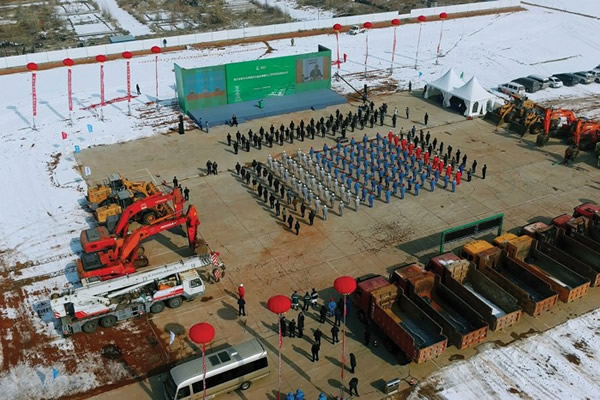Sign up for our newsletter to receive the latest news, exclusive offers, and discount infomation.

Sinopec, China’s state-owned oil and chemical giant, has embarked on what it says is the world’s largest project to use green hydrogen for making chemicals from coal. To be built in Ordos in Inner Mongolia at a cost of about $830 million, the complex will produce 30,000 metric tons (t) of green hydrogen and 240,000 t of green oxygen annually.
Unlike so-called grey hydrogen produced from natural gas or coal, green hydrogen is made by splitting water with renewable energy. Using solar and wind power generated in Inner Mongolia, the Sinopec project will supply its hydrogen and oxygen to a nearby coal processing facility operated by ZTHC Energy, in which Sinopec is a shareholder. The ZTHC facility produces polyolefins and methanol from these ingredients and coal.
Compared with the current practice at ZTHC, in which coal is used to produce hydrogen, the Ordos project will reduce carbon emissions by 1.43 million t annually, Sinopec says.
Producing chemicals from coal generally emits more carbon dioxide than making them from natural gas, notes Xu Jiangfeng, a strategy researcher with China National Offshore Oil Corporation. However, using green hydrogen will lower carbon emissions, he says, and turning coal into chemicals emits less CO2 than burning it as a fuel. China is deficient in natural gas for both these processes.
A previous Sinopec green hydrogen project was launched in Kuqa, Xinjiang, in 2021. With an estimated annual output of 20,000 t of green hydrogen, it is expected to be completed in June. Sinopec is investing in another major green hydrogen project in its Zhongyuan oilfield in the central Chinese province of Henan.
Sinopec unveiled an ambitious hydrogen development plan in 2021, vowing to become a national leader in green hydrogen. In 2021, the company produced 3.5 million t of hydrogen, primarily from natural gas and coal, accounting for 14% of China’s total output.
The firm’s ambitions are in keeping with the Chinese government’s Mid- and Long-term Hydrogen Industry Development Plan (2021–2035), released last year, which acknowledges the energy use of hydrogen and puts it in the future energy portfolio of China. PetroChina, Sinochem, and the power giants CHN Energy and Huaneng Group also launched green hydrogen initiatives in recent years.However, according to a policy paper published last year in the Journal of the Chinese Academy of Engineering by Ling Wen, a professor at Shanghai Jiaotong University, China is mainly developing hydrogen as a transportation fuel, a market with questionable commercial sustainability.
Xu agrees that transportation use of hydrogen has shortcomings, as hydrogen fuel-cell vehicles are less competitive than electric cars in Chinese cities. However, “hydrogen can be added into natural gas for household use, which has a vast market and can reduce carbon emissions much more than vehicle uses,” Xu says, noting that 20% hydrogen can be added without updating pipelines and heating units.